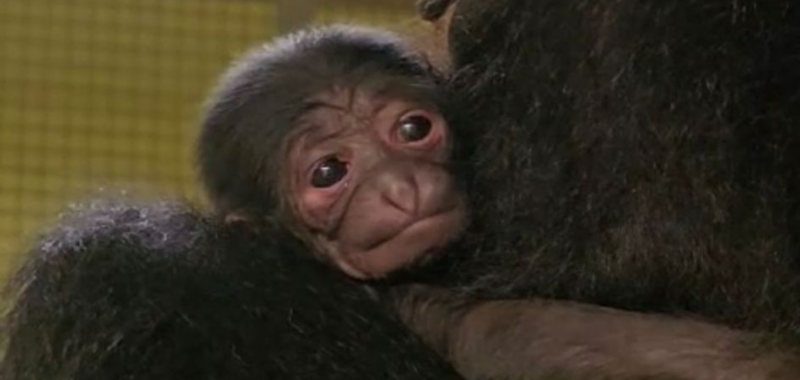While the two adorable pygmy hippos continue to vie for the title of cutest viral animal, a new primate stands poised to steal some hearts. On October 27, a new baby siamang gibbon (Symphalangus syndactylus) was born to mother Hutan and father Sensei at Zoo Tampa at Lowry Park in Florida. The sex of this new arrival is still unknown, but the baby will join big sister Kazuki who is three years old. Zoo officials observed the baby clinging tightly to Hutan and nursing and both mom and baby gibbon are reportedly doing well.
“The entire ZooTampa family is very excited about the expansion of our siamang family,” Chief Zoological Officer Chris Massaro said in a statement. “Siamangs are endangered, so every birth is extremely important and a sign of hope for the species. The baby is doing well and guests visiting the Zoo may get a glimpse of the new arrival in the coming days.”
[Related: Scientists tracked the love songs of Skywalker gibbons to find them.]
Siamangs are the largest species of gibbon and are known for being particularly agile and acrobatic. These black furred apes have long arms and both opposable thumbs and toes. According to the San Diego Zoo and Wildlife Alliance, adult siamangs are about 30 to 35 inches tall and weigh 17 to 28 pounds. Their arm spans are almost five feet long, and they can cover up to 10 feet in a single swing.
They primarily eat fruit, but will occasionally eat some leaves or a protein-rich snack like insects or small birds’ eggs. Siamangs also will generally eat with one hand, while hanging from a tree with the other.

Unlike many species in the wild, siamang fathers play a significant role in raising their young. Fathers will take over the daily care of offspring when they are about one year old, which is quite unusual for primates. Siamangs also form some extremely tight family bonds and even tend to stay with the same mate for life. A family group typically is made up of one adult male and one adult female and two or three immature offspring. Babies like the newborn at ZooTampa are born hairless except for one small tuft of hair on the top of the head. Soon after birth, infants can grip onto the mother’s fur and cling to her belly.
[Related: 5 things to know about pygmy hippos–like Scotland’s own Haggis.]
In the wild, Siamangs are typically found in treetops in the tropical forests of Indonesia, Malaysia, and Thailand. Their calls include loud barks and booms and they use inflatable throat sac to amplify these calls over the tree canopy. They usually use these loud bellows to claim territory, which can be as large as 50 acres. According to ZooTampa, they will perform a unique song that lasts about 35 minutes to claim territory or strengthen a group bond. A large throat sack inflates to enhance the song’s quality. Scientists call these calls with both male and female parts duetting.

As with all gibbons, siamangs are listed as Endangered on the IUCN Red List. Their numbers have dropped by half in the last decade and some scientists estimate that only 200,000 are left in the wild. Their primary threats are the destruction, degradation, and fragmentation of their habitats, and opportunistic poaching. Recycling is a primary way to help protect their habitats, as glass and aluminum are made from elements that are found in rainforest soil. Reusing and recycling cans and bottles means that we don’t need to excavate as much in these threatened areas. Reducing paper use and checking ingredient lists for sustainable palm oil can also help.

